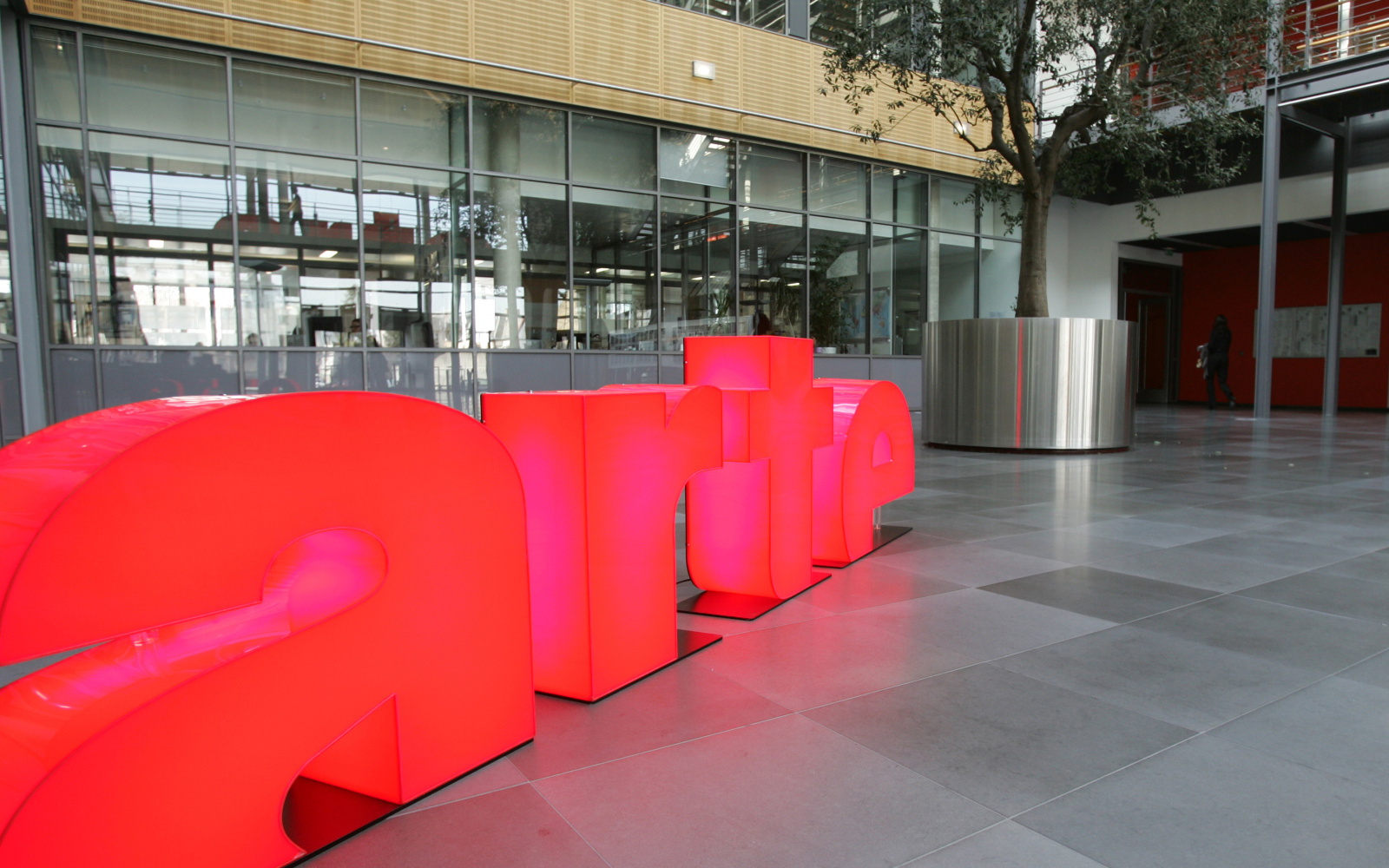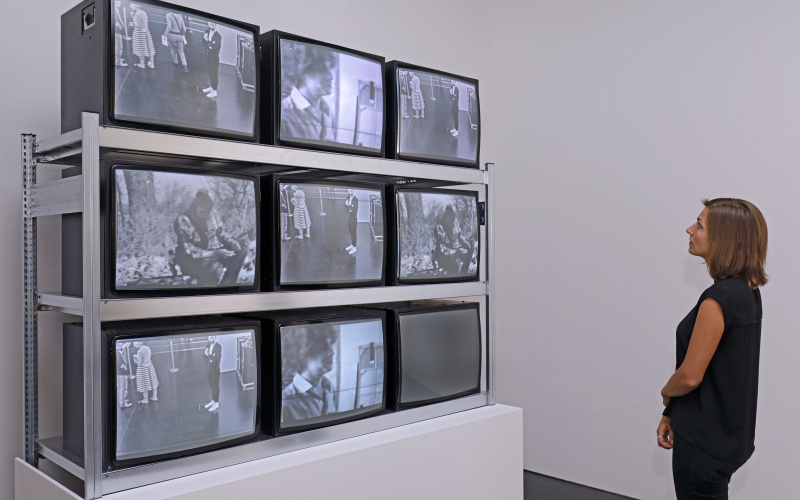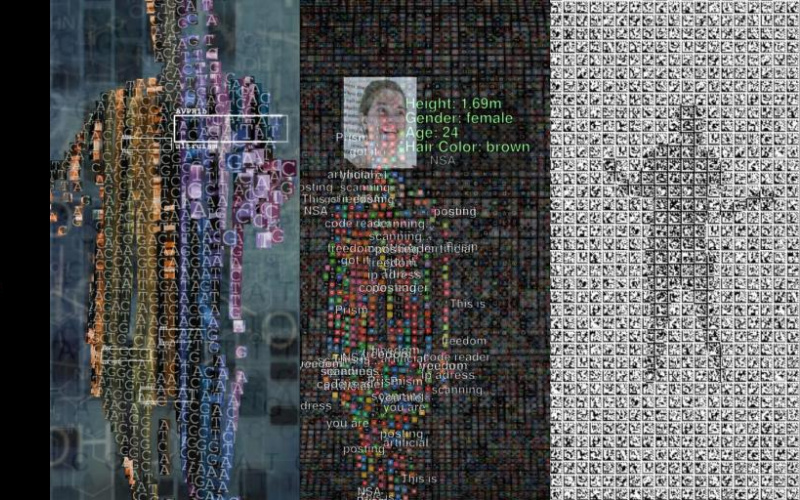Open Circuits
Wed, September 25 – Fri, November 15, 2019
- Location
- ARTE, Strasbourg
Please note: Access to the exhibition is by request only.
The exhibition »Open Circuits« in the atrium of ARTE, realized in collaboration with the ZKM, shows two works of art in dialogue: »Wipe Cycle« by Frank Gillette and Ira Schneider and »YOU:R:CODE« by Bernd Lintermann and Peter Weibel.
Both works refer to everyday life dominated by the media and to the dangers and potentials of media use. The exhibition spans the linkage between utopian demands of the 1960s and the challenges of today's media.
The video installation »Wipe Cycle« was created in 1969 and is representative of an era in which television celebrated its triumphal progress. The artists Frank Gillette and Ira Schneider wanted to break through the one-sided flow of information and the hegemony of the commercial television industry; they set themselves the goal of making recipients part of the flow of information. As members of the Raindance Corporation video collective (founded in 1969 and renamed the Raindance Foundation in 1971), they were influential in developing the concept of »media ecology«, which describes the environment as an information processing system which now allows technical, psychological, and aesthetic aspects to be handled as a whole. Their demand that information tools should be made accessible in order to give consumers back control over their lives made the members of Raindance Corporation pioneers of digital maturity. »Wipe Cycle« anticipates many issues of the digital age.
»Wipe Cycle« was one of the first video installations where visitors could see themselves on the monitor: live and as a delayed transmission of their own image. Their images rotated together with interspersed television programs and prerecorded videos. The inclusion of the visitor in the work, influenced by ideas from cybernetics, links to the work »YOU:R:CODE« by Bernd Lintermann and Peter Weibel, created in 2017 for the exhibition »Open Codes«. The work's title can be read in two ways: »your code« can refer to the transformation of one's image in the installation: the reflected image in the analog mirror gradually turns into a data body. The second reading »you are code« refers to the fact that we ourselves consist of code (the genetic code forms the algorithm of life), which transforms us into readable objects for data analysts and artificial intelligences.
Imprint
- Curator


